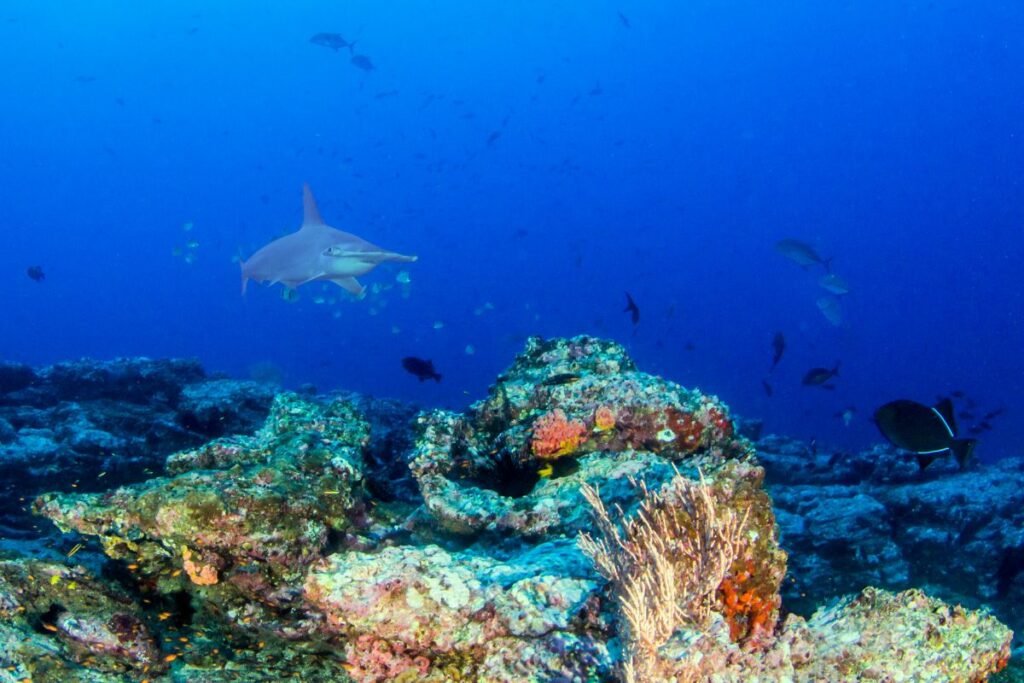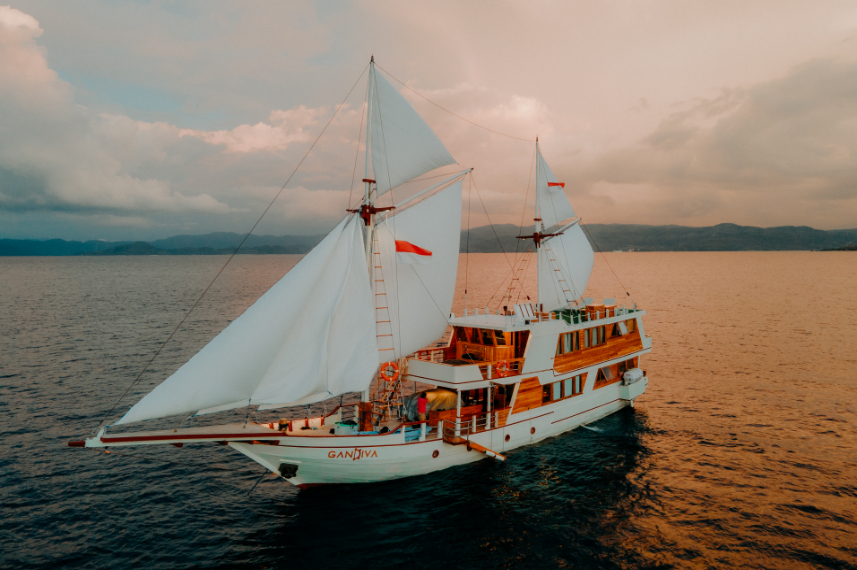Togian Islands
Togian Islands, also known as Togean Islands, are the epitome of lost islands due to their remoteness, and only a few are aware of this gem as a diving destination. Over 50 islands remain unspoiled, and exploring many dive sites here is an exceptional experience.
The Togian Islands prided themselves in having fringing, atolls, pinnacles, and drop- offs to satisfy every type of divers. With the clear crystal water, the incredible pristine areas, and the unbelievable diversity of marine life, there is no reason to skip the Togian Islands from the itinerary.
Top highlights of Togian Islands
- Explore the wreck of the B24 Bomber, which has been kept intact after it sunk during the Second World War
- Be the ones to witness schools of scalloped hammerhead sharks in all its majestic glory in Batu Gila
- Head to the Pinnacle in Una-Una Island and be mesmerized by the walls as deep as 60 meters
- Test your adventurous side at Dominic Rock, where the drop-offs glide into the black abyss at 40 meters and beyond
- Swim with the stingless jellyfish at Danau Mariona, also known as Jellyfish Lake
About Togian Islands
This mini archipelago lies between north and south Sulawesi and appears like a speckle on the map. Situated in the middle of Tomini Bay, reported to be the calmest in the world, the Togian Islands consist of more than 50 volcanic islands with 59 villages, including the Bajau people, also known as the sea nomads. Over 25,000 Bajau people around the Togian Islands live in stilted houses above the sea.
The remoteness of the Togian Islands plays a crucial role in maintaining a pristine and healthy environment for marine life. The region is still considered one of the best- kept secrets of diving destinations, as the Togian Islands are often overshadowed by their northern counterparts, Lembeh Strait and Bunaken.
Diving in Togian Islands
The Togian Islands are often overlooked as diving destinations, as Bunakan and Lembeh Strait have become synonymous with diving in Sulawesi. Yet, the remoteness of the area and the stunning underwater topography should be the sole reasons to explore these magnetic islands.
With various reef formations, from atolls to fringing reefs and barrier reefs, the Togian Islands always have something to offer when it comes to diving. Schools of anthias, snappers, fusiliers, tuna, barracudas, groupers, trevallies, and rainbow runners often form shimmering whirlpool walls and intercept the light to penetrate deeper. At the same time, smaller fishes like butterflyfish, tobies, scorpionfish, triggerfish, angelfish, and anemonefish move around the coral reefs with their splashing colors. Big fish like eagles and manta rays, reef sharks, silky sharks, and the elusive scalloped hammerhead sharks often make sightings in the Togian Islands, especially in Batu Gila for the latter.
The coral reefs in the Togian Islands are extraordinary. The remoteness plays an integral part in ensuring the condition of the corals is healthy. Different species of sponges, from tube and barrel sponges to gorgonians, black corals, table corals, and tunicates in various shades, decorate the walls around the Togian Islands.
Discover your next adventure in
Chasing for The Scalloped Hammerhead
There aren’t many dive sites in Indonesia where scalloped hammerhead sharks take center stage. But in one dive site in the Togian Islands, the chance to encounter this specific shark species is open.
Batu Gila, with a depth beyond 40 meters and its extraordinary drop-off, is the place to be. Schools of scalloped hammerhead sharks can be seen around the edge of the ridge, among the actions of many big fish and colorful corals. This is a sight to behold, as scalloped hammerhead sharks are known to congregate in significant numbers only during the day, even though when the night falls, they become solitary hunters.
Though never a guaranteed sighting, seeing this elusive shark in a group will surely be special for many divers and promise an unforgettable experience.
Diving Environments in Togian Islands
Diving in the Togian Islands is about the mystery, as the region offers an adventurous journey for those brave enough to take it. Consisting of pinnacles, walls, and drop- offs, the depth of many dive sites on the Togian Islands ranges from 5 meters to 40 meters and beyond. The currents can be strong, and some spots are aimed at experienced divers.
With topography like the ones in the Togian Islands, the visibility falls in the excellent category. It ranges from 20 to 40 meters on a clear day and during the dry season, perfect for observing all the biodiversity of marine life available here. The visibility drops significantly once the rainy season starts.
The water temperature on the Togian Islands is constant throughout the year, in the range of 27 to 30 degrees Celsius. A 3mm wetsuit should be adequate to explore the Togian Islands.
Discover your next adventure in
How to get to Togian Islands
1) By plane
Getting to the Togian Islands is not straightforward, but this is why the Togian Islands are still unspoiled. Palu should be the entry point. If you fly from Jakarta, Garuda, Citilink, and Batik Air have non-stop services to Palu. While if you depart from Surabaya, there is a stopover in Makassar. If you fly from Bali, you can fly to Surabaya or Jakarta first, as there is no direct service to Palu.
From Palu, there is a direct flight to Tanjung Api Airport in Ampana, but for this service, the ticket can only be purchased on the spot as the flight schedules are irregular. From Ampana, there is a boat to Wakai—a town in the Togian Islands—and it takes approximately five hours.
2) By Liveaboard
This is the most sensible choice to explore the Togian Islands as Liveaboard services often have a combination trip to other diving destinations, especially Lembeh Strait or Bunaken. Liveaboard also gives a sense of no fuss since the trip is already scheduled.
Diving Seasons & Weather in Togian Islands
Diving in the Togian Islands can be done throughout the year, similar to its northern counterparts. The best time to explore many dive sites here is from March to October when the weather is clear, and there is less rain.
January and February are the wettest seasons, which means rainfall is high, visibility is limited, and the sea surface is rough. Outside those months, diving in Togian is guaranteed excellent conditions, with a calmer sea and visibility at its prime.
The peak tourist season in the Togian Islands is between July and August during the school holiday. The weather during this month can be sweltering, but clear blue skies and sunshine can be your best friend underwater.
























